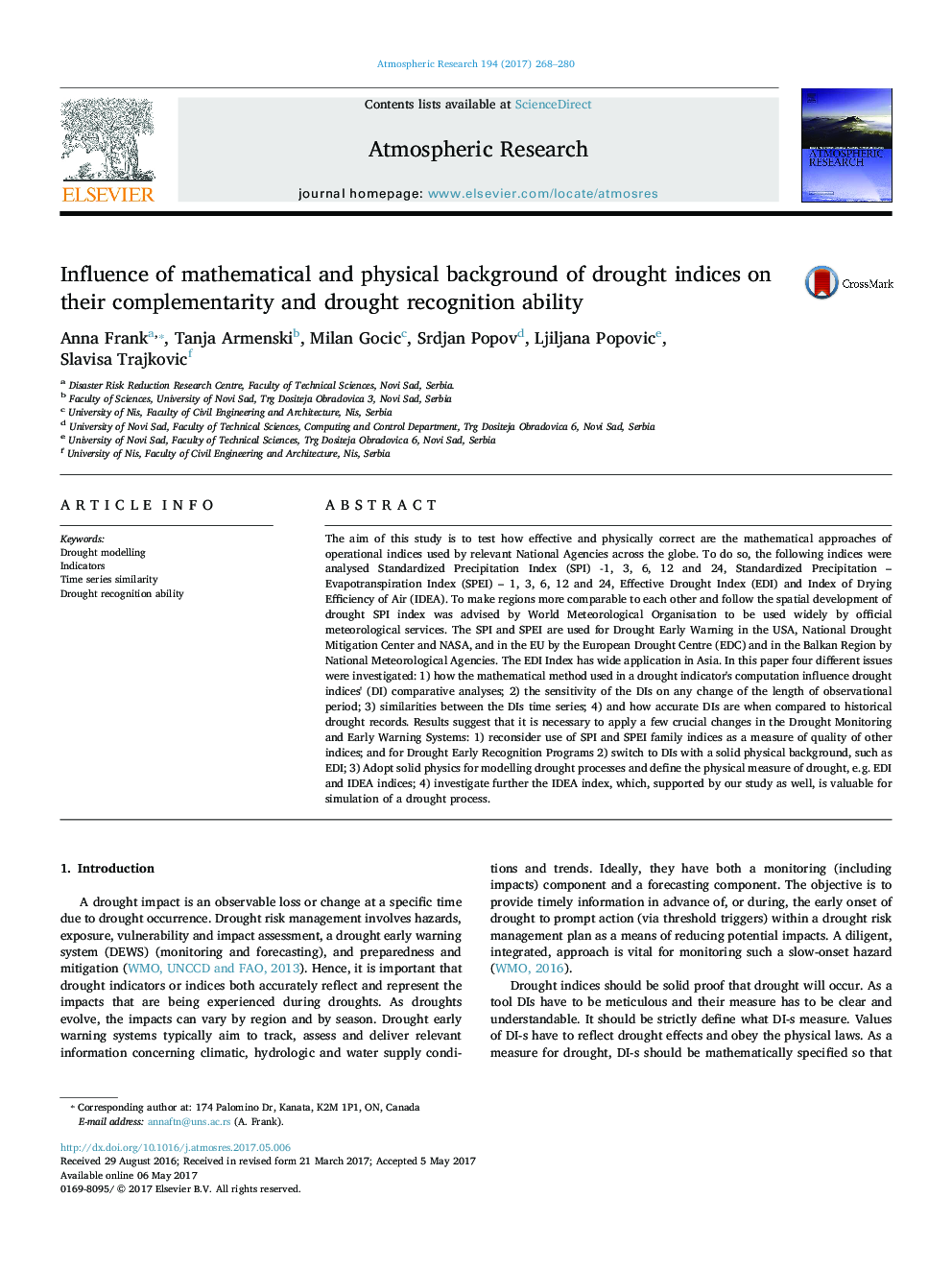| کد مقاله | کد نشریه | سال انتشار | مقاله انگلیسی | نسخه تمام متن |
|---|---|---|---|---|
| 5753628 | 1620487 | 2017 | 13 صفحه PDF | دانلود رایگان |
عنوان انگلیسی مقاله ISI
Influence of mathematical and physical background of drought indices on their complementarity and drought recognition ability
ترجمه فارسی عنوان
تاثیر ریاضی و فیزیکی پس زمینه شاخص های خشکسالی بر توانایی شناخت سازگاری و خشکسالی آنها
دانلود مقاله + سفارش ترجمه
دانلود مقاله ISI انگلیسی
رایگان برای ایرانیان
کلمات کلیدی
مدل سازی خشکسالی، شاخص ها، شباهت سری زمانی، توانایی کشف خشکسالی،
موضوعات مرتبط
مهندسی و علوم پایه
علوم زمین و سیارات
علم هواشناسی
چکیده انگلیسی
The aim of this study is to test how effective and physically correct are the mathematical approaches of operational indices used by relevant National Agencies across the globe. To do so, the following indices were analysed Standardized Precipitation Index (SPI) -1, 3, 6, 12 and 24, Standardized Precipitation - Evapotranspiration Index (SPEI) - 1, 3, 6, 12 and 24, Effective Drought Index (EDI) and Index of Drying Efficiency of Air (IDEA). To make regions more comparable to each other and follow the spatial development of drought SPI index was advised by World Meteorological Organisation to be used widely by official meteorological services. The SPI and SPEI are used for Drought Early Warning in the USA, National Drought Mitigation Center and NASA, and in the EU by the European Drought Centre (EDC) and in the Balkan Region by National Meteorological Agencies. The EDI Index has wide application in Asia. In this paper four different issues were investigated: 1) how the mathematical method used in a drought indicator's computation influence drought indices' (DI) comparative analyses; 2) the sensitivity of the DIs on any change of the length of observational period; 3) similarities between the DIs time series; 4) and how accurate DIs are when compared to historical drought records. Results suggest that it is necessary to apply a few crucial changes in the Drought Monitoring and Early Warning Systems: 1) reconsider use of SPI and SPEI family indices as a measure of quality of other indices; and for Drought Early Recognition Programs 2) switch to DIs with a solid physical background, such as EDI; 3) Adopt solid physics for modelling drought processes and define the physical measure of drought, e.g. EDI and IDEA indices; 4) investigate further the IDEA index, which, supported by our study as well, is valuable for simulation of a drought process.
ناشر
Database: Elsevier - ScienceDirect (ساینس دایرکت)
Journal: Atmospheric Research - Volume 194, 15 September 2017, Pages 268-280
Journal: Atmospheric Research - Volume 194, 15 September 2017, Pages 268-280
نویسندگان
Anna Frank, Tanja Armenski, Milan Gocic, Srdjan Popov, Ljiljana Popovic, Slavisa Trajkovic,
